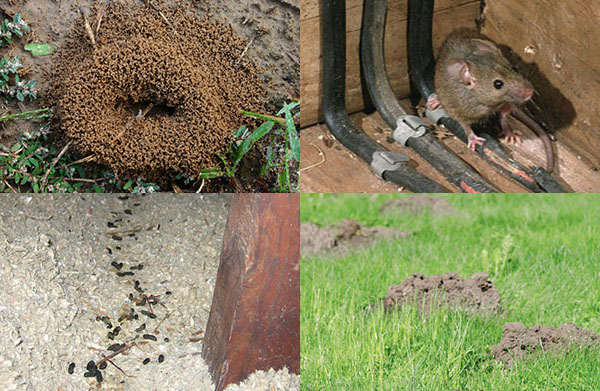
Save hundreds of dollars every year by performing your own quarterly pest inspections. Use this guide to learn where pests are most likely to harbor around your property and how they might enter your home. Then, pay close attention to these areas during your quarterly walk-through. It's also important to perform routine inspections in order to prevent a small pest problem from becoming a large infestation. Time is of the essence with pests like termites and bed bugs.
Read our 3-step do it yourself pest inspection guide below. Worried you might have pests? Read our general pest prevention treatment guide to learn how you can treat your property before an infestation becomes overwhelming.
Inspect Your Property and Identify Problem Areas
To begin your pest inspection, you will need to identify problem areas around your home or structure that are attractive to pests.
While walking around the perimeter of your property, keep these questions in mind:
1. Are there any tree branches or shrubs touching the structure?
2. Is there any dense or tall brush or grasses on the property?
3. Is there mulch or pine needles around the structure?
4. Are there overly moist areas or areas of standing water on the property?
5. Are your gutters blocked or otherwise obstructed?
6. Is there any lawn debris such as leaf piles, wood piles, or grass clippings on the property?
If you answer yes to any of these questions, you will need to address these problem areas to avoid a pest infestation.
Watch the video below to learn how to conduct a thorough pest inspection around your property.
Inspect Areas Where Pests Can Enter Your Home or Structure

After walking the perimeter of your home or building, inspect your attic, basement, crawlspace, and the main floor. While doing this inspection, think of the areas where pests like rodents or roaches can enter your structure.
Entry points that can allow pests into your structure include:
1. Torn or missing window screens
2. Large cracks or crevices along the home's foundation or around window and door frames
3. Loose or broken weather stripping and brush guards around doors
4. Gaps around cables, pipes, and wires leading into the structure
5. Missing vent covers around the structure
Identify Suspected Pests on Your Property
Finally, identifying pests that may already be present on your property will allow you to choose the correct treatment plan to eliminate these infestations.
Look for these signs of an active infestation on your property while performing your inspections:
1. Do you see areas on your property that have been disturbed, such as mounds on your lawn, chewed wood on your structure, or gathered nesting materials?
2. Do you see animal feces around the structure or in crawl spaces?
3. Do you see actual animals or insects on the property or inside the home?
If you answered yes to any of the questions above, you probably have a pest problem. Learn how you can treat for pests with our general pest prevention treatment guide. If you know which specific pest is infesting your property, take a look at our pest control guide library for treatment and prevention advice for that specific pest. Or, give our customer service team a call at 866-581-7378.





